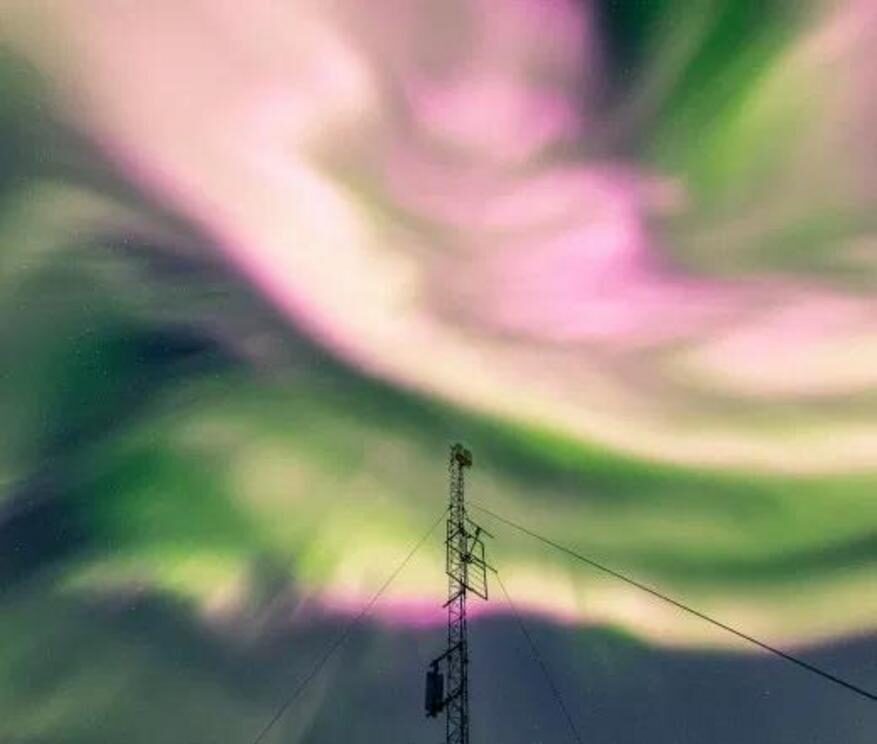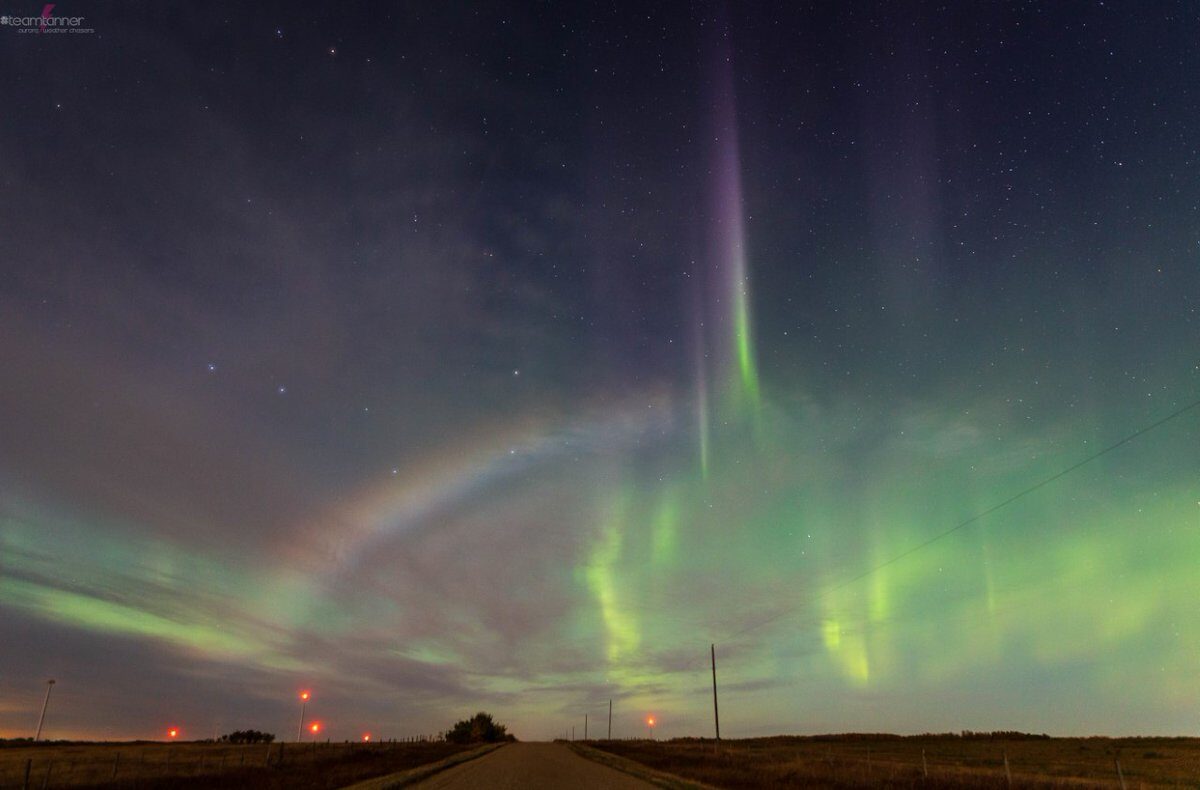
Mesmerizing curtains of colorful lights shimmered across the night skies above the Arctic Circle on Saturday and Sunday, with luminous pillars lighting up the landscape beneath shades of green, purple and pink. Skywatchers fixed their cameras pointing upward, the spectacle witnessed from Scandinavia, Alaska and Canada. It was a display of the northern lights, or aurora borealis.
The ordinarily ephemeral show lasted for hours as a powerful geomagnetic storm transformed bursts of energy from the sun into a palette of pastels. Energy hurtling toward Earth from the sun poured along the magnetosphere, the magnetic field that surrounds the planet. Like a natural sunscreen protecting us from damaging high-energy particles, it transforms protons and cosmic radiation into innocuous visible light.
Usually, the aurora appears in hues of green or violet, but on Saturday night, a rare rose-colored complexion washed across the sky. According to SpaceWeather.com, pink colors signify that some of the high-energy particles from the sun are penetrating deeper into Earth's atmosphere, reaching low altitudes and striking molecules of nitrogen. Nitrogen makes up 78 percent of the atmosphere.
Most auroras form 60 to 180 miles above Earth, the highest auroras tinged with red. But on occasion, auroras can occur below 60 miles in altitude, at the bottom of the thermosphere. That's the fourth layer of atmosphere.
On Friday, the first bout of geomagnetic storming began, registering as a G1 on a 1 to 5 scale. A G1 geomagnetic storm, which brings the northern lights to Canada and perhaps the extreme northern tier of Michigan or the Great Lakes, isn't overly rare, on average occurring 900 days over each 11-year solar cycle.
There have been some stunning images of the Northern Lights this week. If you want to marvel at the majesty of this natural wonder, check out the superb photographs of Ivan Hawick who lives on Shetland! pic.twitter.com/DMoWUnbau8
— Neil Drysdale (@NeilDrysdale) September 26, 2020
The solar cycle is a recurring pattern of sunspots, or energetic discolorations, on the surface of the sun that peaks every 11 years. Sunspots are like bruises, pulsating with energy and occasionally flicking it toward Earth.
The Earth is more likely to be affected by geomagnetic storming when more sunspots are present. We're currently exiting solar minimum.
This is what two consecutive high speed solar wind streams have produced so far over Senja in Norway in the past 2 days in real time 🤩 more to come 🤞 #aurora @TamithaSkov @StormHour @B_Ubiquitous @INSVideos @chunder10 @SpaceToday1 @dartanner @cogie_s @Astromackem @treetanner pic.twitter.com/MZ1QLfcBuB
— Adrien Mauduit (@NightLights_AM) September 28, 2020
As such, the instigator to the recent spate of geomagnetic storming wasn't a sunspot, but rather a coronal hole. Coronal holes are cooler regions of the sun that also throb with a more constant stream of energy, the "solar wind" funneling outward and into space. That has brought a prolonged period of geomagnetic unrest since last week.
Overnight Sunday into early Monday, that activity increased to G2-level storming. That corresponds to chances of aurora sightings for northern Maine, New Hampshire, Vermont, parts of the Upper Midwest and all of Canada.
In central Alberta, the auroras were even accompanied by a double moonbow, or the ghostly nocturnal version of a rainbow. Darlene Tanner and her partner, Theresa, captured the incredible scene in the town of Castor, about 150 miles northeast of Calgary.

The duo had been working to outrun clouds filtering in ahead of inclement weather to snag a shot of the auroras.
The Northern Lights were visible last night from Glasgow and should be again tonight. Clouds will be around tonight making for a little more difficult viewing conditions, but there should be enough breaks to catch a show in the northern sky starting late this evening! #mtwx pic.twitter.com/nVv3VwUSXe
— NWS Glasgow (@NWSGlasgow) September 28, 2020
Meanwhile, continued G2 geomagnetic storming is expected in the days ahead, with additional auroras likely in Canada, Alaska, the Arctic Circle and, potentially, along the U.S.-Canada border. Even northern Scotland could get in on the action.
It is unlikely that the aurora will be spotted farther south in the Lower 48 unless a special, sensitive camera is used.



[Link]